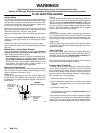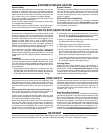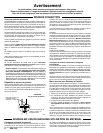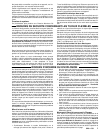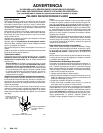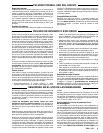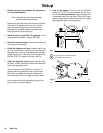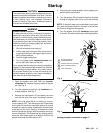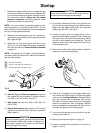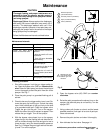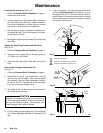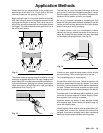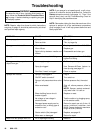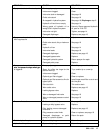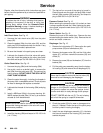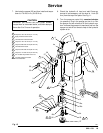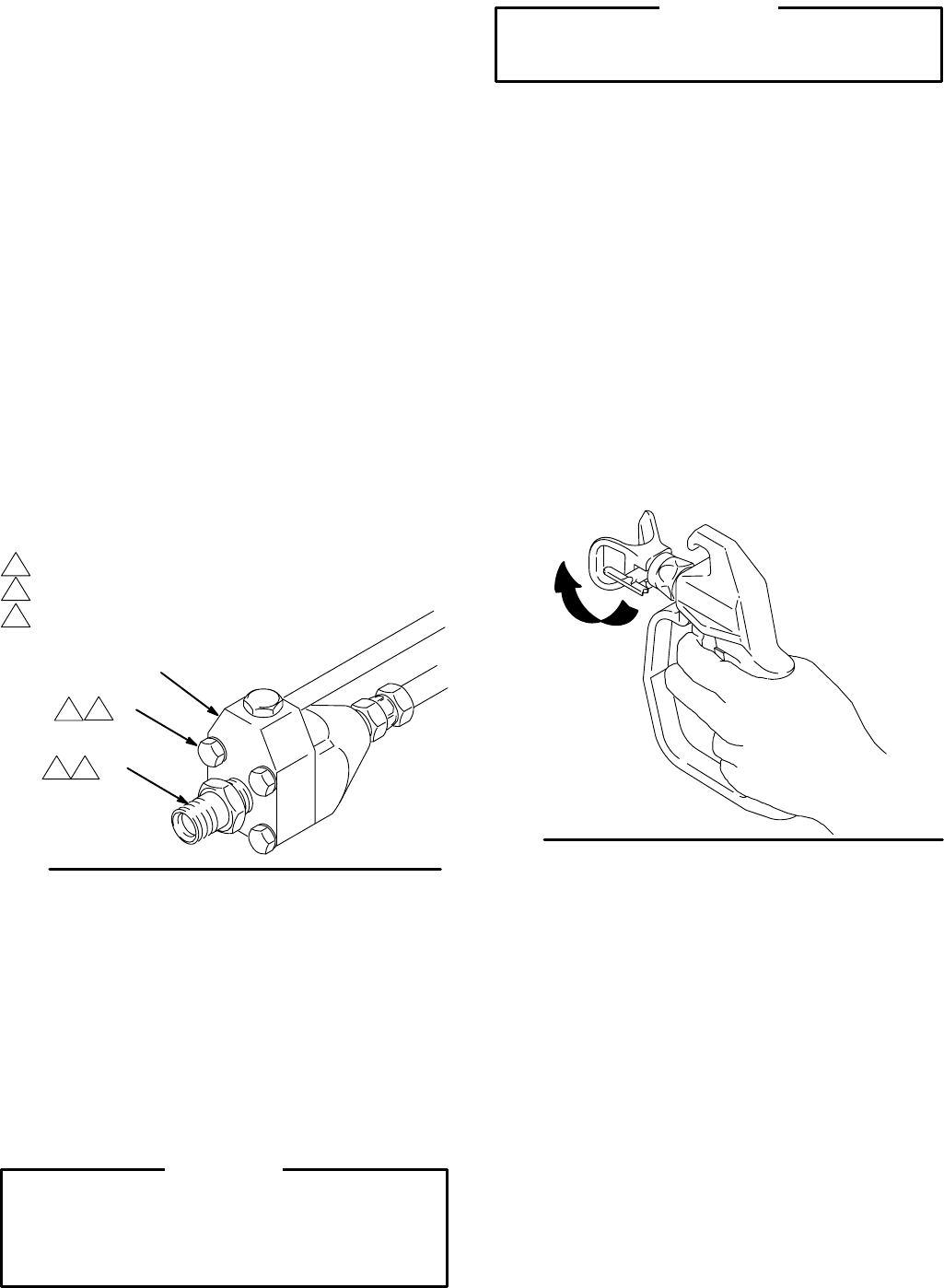
12 820-133
Startup
7. Release the trigger safety lever and trigger the gun
onto
a piece of paper to check the spray pattern. Ad
-
just
the pressure setting to obtain the best atomiza
-
tion and spray pattern.
Always use the lowest
pressure necessary.
Excessive pressure cause
premature
tip wear and pump wear
.
NOTE: If
you cannot obtain a good spray pattern or ade
-
quate
atomization, your paint may be too thick. Thin the
paint
according to the manufacturer
’
s recommendations
until
you can get good atomization.
8. Whenever
you stop spraying, even for a moment,
al
-
ways
set
the trigger safety lever to prevent acciden
-
tally
trigger the gun.
9. Whenever you stop spraying for more than a mo-
ment, or if you must leave the sprayer unattended,
shut
it of
f and follow the
Pressure Relief Procedure
on
page 1
1.
NOTE: The
sprayer will not restart
if it was left pressur
-
ized after shutting the sprayer of
f. Relieve the pressure,
then
start the sprayer
.
Fig. 5
0273
1
3
2
Lubricate
the threads.
T
orque to 170–200 in–lb (19–23 N.m).
T
orque to 320–360 in–lb (36–41 N.m).
22
26
25
1
2
1 3
10.
After
the first 3 to 5 hours of operation
torque the
four
screws (25) on the bottom of the paint pump to
170–200 in–lb (19–23 N.m). See Fig. 5.
11.
Also torque
the inlet valve (26) to 320–360 in–lb
(36–41
N.m).
12.
Repeat
these torques
after another
3 to 5 hours of
operation,
and then after each 25 hours of operation
(about
weekly).
CAUTION
Failure
to properly tighten the inlet valve and
screws
at
the intervals indicated will result in oil leaking from
the hydraulic system into the paint, and can cause
costly
damage to the sprayer
.
CAUTION
Never start the electric motor with the inlet valve re-
moved
to avoid damaging the diaphragm.
13.
If you have a Reverse-A-Clean IV tip guard on your
gun
and the tip clogs while spraying,
release the gun
trigger, lock the trigger safety lever, and rotate the
spray
tip handle 180
_
. See Fig. 6.
14. Unlock the safety lever and trigger the gun into a
grounded metal waste container. Hold a metal part
of
the gun firmly to the side of the container to
reduce
the risk of static sparking and splashing. The fluid
pressure should force the obstruction from the tip.
Lock
the safety lever
.
15. Return
the handle to
the original position, unlock the
safety
lever, and resume spraying.
Fig. 6
0278
16.
If
the tip is still clogged
, lock the trigger safety lever
,
shut
of
f and unplug the sprayer
, and open the bypass
valve
one turn
counterclockwise
. Disassemble the
tip in the reverse order of assembly (see manual
307–848).
Thoroughly clean all parts in a compatible
solvent and inspect for wear or damage. Replace
parts as needed and reassemble. Be sure to use a
new
seal and gasket when changing tips.
17.
If
you have a
tip guard on your gun which is not self-
clearing,
follow step 12.
18.
Spraying techniques are given on page 15.
19. Important maintenance procedures are given on
pages
13 and 14.



